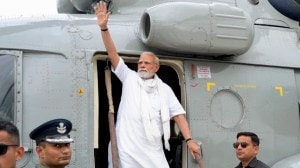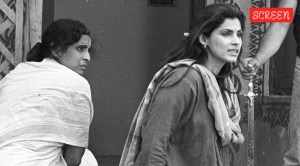Click here to join Express Pune WhatsApp channel and get a curated list of our stories
How dhol-tasha pathaks of Pune uphold tradition, break glass ceilings
The first weeks are spent teaching the basics while the final stretch is devoted to fresh beats.
 The Sangharsh Pathak has grown into a more than 500-member family. (Express photo)
The Sangharsh Pathak has grown into a more than 500-member family. (Express photo)They are responsible for adding drum beats and the music of cymbals to Ganeshotsav festivities. Dhol-tasha pathaks however, do more than represent the sounds of the season. “If someone needs blood or help in a crisis, our members are the first to step up,” says Pratik Kavita Ulhas Tendulkar, founder of the Sangharsh Dhol Tasha Pathak.
Founded in 2013, as a tribute to Pratik’s mother, the pathak encapsulates a spirit of resilience. “The word sangharsh means struggle, and that’s exactly how we began. I founded pathak on my mother’s birthday to guide youngsters away from bad habits and towards devotion,” says Pratik.
The Sangharsh Pathak has grown into a more than 500-member family. At its peak, it boasted nearly 900 members, but Tendulkar deliberately reduced numbers to keep quality and trust at the core. With members between five and 67, ranging from IT professionals to armed forces personnel, the pathak has battled financial constraint, among other challenges.
“It was also a challenge to find a place to practice but we never gave up,” says the founder. Today, Sangharsh is among the few groups invited to perform at Kasba Ganpati, the first manache Ganpati.
Naadmrudang Dhol Tasha Pathak represents a different kind of breakthrough. Formed just last year, it is Pune’s all-women pathak, created by a group that once played in mixed ensembles but felt uncomfortable.
“Here, only women play the dhols. The tasha are played by our own children, so it feels safe and supportive,” said co-founder Pratibha Vishal Vetal, who has been on the dhol for 11 years. The group now has nearly 100 members, ranging from eight-year-olds to women in their sixties.
Practice begins 40-45 days before the festival. The first weeks are spent teaching the basics while the final stretch is devoted to fresh beats. This year, Naadmrudang is introducing Bheemroopi Jai Hanuman, sequences that will be performed during visarjan at Koregaon Park.
“These two months of playing give us energy for the whole year,” says Vetal. Like other groups, their biggest struggle is space. “In Pune, there’s no open ground left. If we go too far, members don’t attend. Inside the city, housing societies and police permissions are difficult. Still, we adjust, because this is our passion,” says Prathamesh Hendre, co-founder of Naadamrudang.
For another city pathak, Nadbrahma Dhol Tasha Dhwaj Pathak, the celebration has already started. “Playing for the Border Security Force at Attari on Independence Day, was an unforgettable honour,” says secretary Anand Santosh Khandelwal.
Founded in 2011, Nadbrahma Pathak has 986 members, between six and 68. The group’s Ganeshotsav calendar stretches from Pune to Phuket to Bangkok. In the city, they will once again be part of the grand visarjan route from Tilak Putala to Alka Talkies via Laxmi Road.
Nadbrahma is also tied to some of Pune’s esteemed mandals, such as Guruji Talim, Twashta Kasar, and will play for Aviation Minister Murlidhar’s Ganpati in Kothrud. “For us, it’s not about money.
Playing dhol-tasha is about culture, discipline and service,” says ,” Khandelwal. The group has adopted an old-age centre for abandoned women this year, pledging to provide their food supplies for a year. It’s a decisive step to keep alive the spirit of Ganeshotsav in every corner of the city.
Click here to join Express Pune WhatsApp channel and get a curated list of our stories







